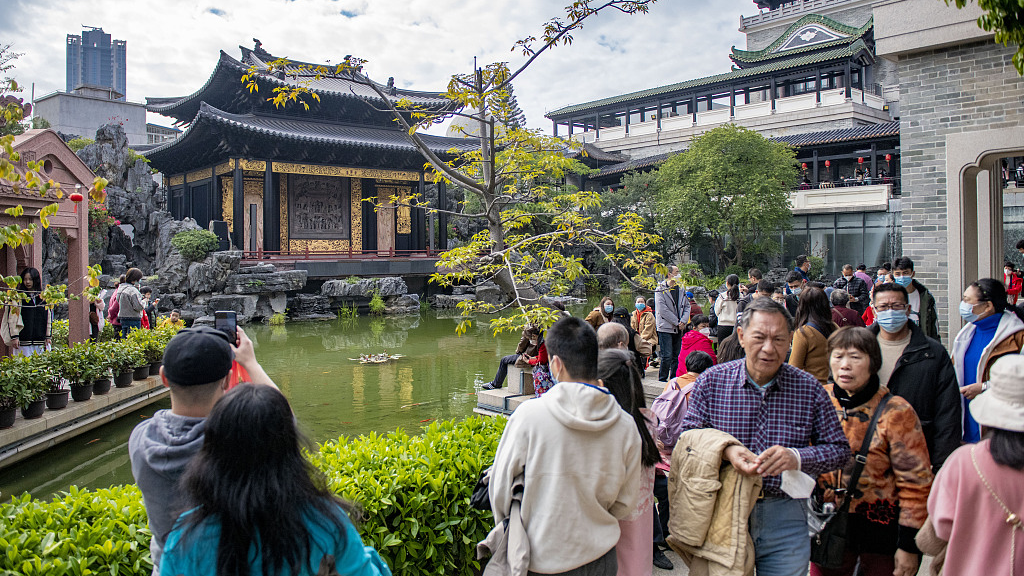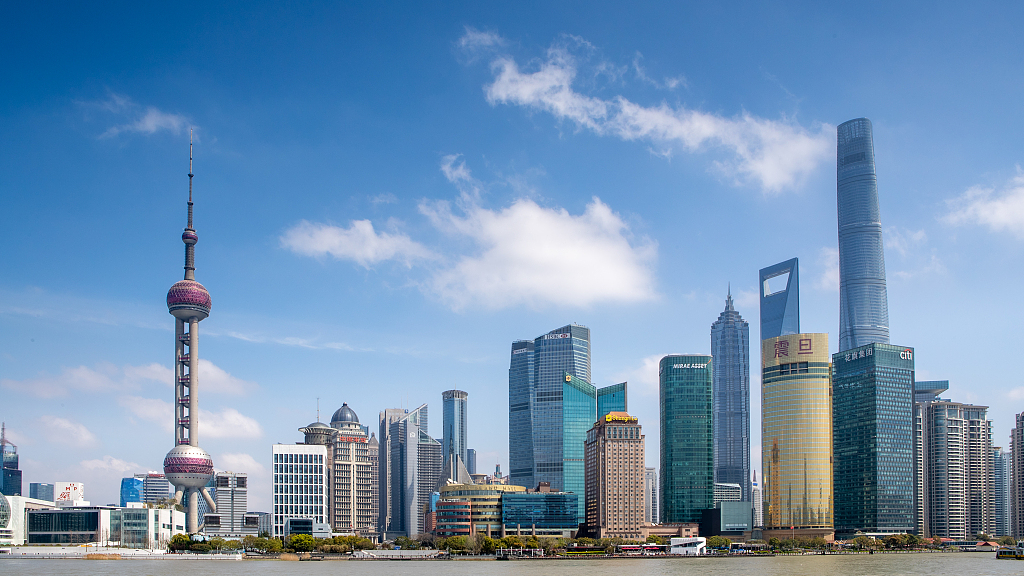Chinese modernization shares similarities to the modernization processes of all countries, but it is more characterized by features that are unique to the Chinese context.
President Xi Jinping described Chinese modernization as "a new model for human advancement" while addressing the opening of a study session at the Party School of the Communist Party of China (CPC) Central Committee on Tuesday.
It dispels the myth that "modernization is equal to Westernization," presents another picture of modernization, expands the channels for developing countries to achieve modernization, and provides a Chinese solution to aid the exploration of a better social system for humanity, Xi said.

People visit the Cantonese Opera Art Museum in Guangzhou, south China's Guangdong Province, January 26, 2023. /CFP
People visit the Cantonese Opera Art Museum in Guangzhou, south China's Guangdong Province, January 26, 2023. /CFP
People-centered approach
Chinese modernization is the modernization of a huge population and of common prosperity for all, said Xi, citing the report to the 20th CPC National Congress.
An article by Xi published in the Qiushi Journal said the people are the foundation and lifeblood of the CPC. "Our Party has no special interests of its own, and puts our people's interests first at all times," the article read.
Achieving common prosperity is a defining feature of socialism with Chinese characteristics, according to the report to the 20th CPC National Congress.
China announced in 2021 that the country had lifted the final 98.99 million rural residents living under the poverty line out of poverty, and removed all 832 impoverished counties and 128,000 villages from the poverty list.
UN Secretary-General Antonio Guterres once commented that China's great achievements in poverty reduction constitute "the biggest contribution for dramatical reduction of poverty."
And over the past four decades, people's lives in China have been dramatically improved. Being a primarily agricultural country about 70 years ago, China now boasts the world's most extensive social welfare system, the largest high-speed railway network and cutting-edge technologies in many sectors.
In the past decade, China's GDP has grown from 54 trillion yuan to 114 trillion yuan (about $16 trillion) and accounts for 18.5 percent of the world economy, up 7.2 percentage points.
The country has remained the world's second-largest economy, and its per capita GDP has risen from 39,800 yuan to 81,000 yuan.

A view of Shanghai, China. /CFP
A view of Shanghai, China. /CFP
High-quality open cooperation
China has been pursuing modernization in a comprehensive way. It has coordinated material and cultural-ethical progress, promoted economic, political, cultural, social and ecological development, and adhered to a new development philosophy that highlights innovation, coordination, greenness, openness and sharing.
Deeply involved in the global industrial division of labor and cooperation, China has established scientific and technological cooperation with more than 160 countries and regions, signed 114 intergovernmental agreements on scientific and technological cooperation, and participated in nearly 60 international "big science" research plans and projects.
Furthermore, China has pushed its opening-up to a higher level, optimizing the business environment and ramping up cooperation under the Belt and Road Initiative. It has advanced the construction of 21 pilot free trade zones and signed Belt and Road cooperation documents with 149 countries and 32 international organizations.
In terms of in-depth implementation of the Belt and Road science and technology innovation action plan, China actively promotes four action plans for scientific and cultural exchanges, establishment of joint laboratories, cooperation in science and technology parks, and construction of technology transfer centers.
The country started the construction of 53 Belt and Road joint laboratories in three batches, supported more than 3,500 young scientists to come to China to carry out scientific research for more than half a year, trained more than 15,000 foreign scientific and technological personnel, and provided funding for research by nearly 2,000 experts.
Attaching great importance to low-carbon development, China has announced the goal of peaking carbon dioxide emissions before 2030 and achieving carbon neutrality before 2060.
Peaceful development path
Peaceful development has also distinguished China's modernization from that of the West. In contrast to Western colonialists who resorted to wars and acts of aggression in the late 19th century, China has marched toward modernization through relentless hard work, and blazed a trail of win-win cooperation on the world stage.
To that end, China has put forward the Belt and Road Initiative, the Global Development Initiative and the Global Security Initiative and called for building a community with a shared future for mankind.
By following a path of peaceful development, China has grown into a global economic powerhouse, contributing to a steady eastward shift of the world's center of economic gravity.
As Xi quoted a proverb in Uzbekistan when addressing the 22nd meeting of the Council of Heads of State of the Shanghai Cooperation Organization, "With peace, a country enjoys prosperity, just as with rain, the land can flourish."
Read more:
With unique features, Chinese modernization offers opportunities to the world